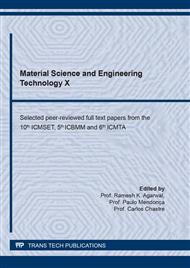p.125
p.131
p.137
p.143
p.148
p.157
p.165
p.170
p.176
Fabrication of Aluminum Nickel Reactive Bilayer by the Lift-Off Process
Abstract:
Semiconductor component and microelectromechanical system manufacturing requires metal patterning in an integrated circuit (IC), using the photoresist lift-Off process. Ideal advantages like cost-effectiveness, reduction of complexity and process maturity are associated with the lift-Off process. Alternatively, the choice of photoresist relies on factors such as cost, initial photoresist thickness and reliable processing parameters extraction. However, the availability of the cheap photoresist is still at question. For the case of the underlying study, a highly cheap photoresist E8015 of thickness 38-micrometer was developed for the purpose of edge profiling. Desirable extraction of the useful parameter range for dry resist processing is performed. Parameter variation like exposure energy and development time led to a successful undercut angle of 66° to 73°, while the straight edge profile of 90° was realized at various parameter combinations. Eventually, a metallic multilayer of 10-micrometer thickness is successfully lifted off on plain silicon. Controlled self-propagating reaction within these structured metallic layers may be employed for IC packaging hereafter.
Info:
Periodical:
Pages:
148-154
Citation:
Online since:
February 2022
Authors:
Keywords:
Price:
Сopyright:
© 2022 Trans Tech Publications Ltd. All Rights Reserved
Share:
Citation:


